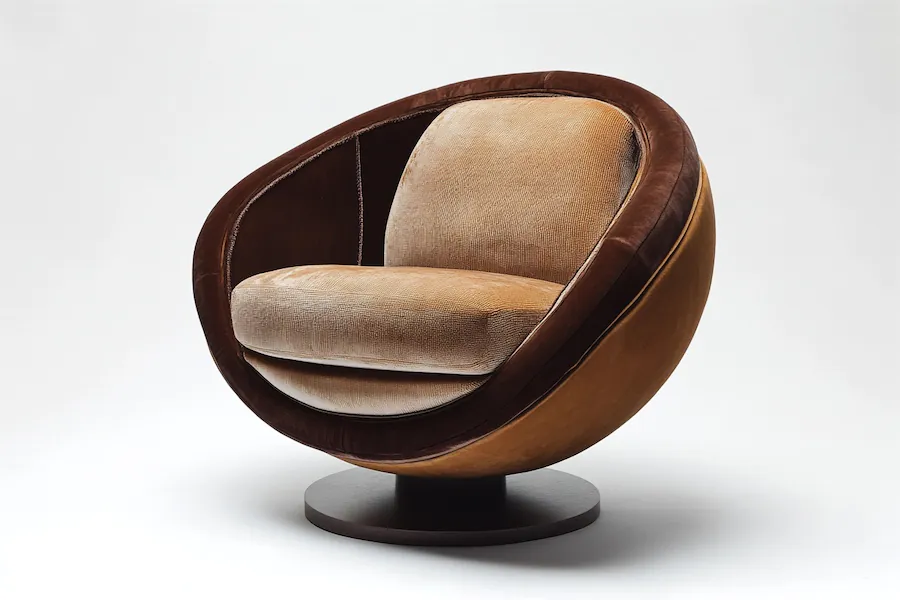Swivel chairs, characterized by their ability to rotate 360 degrees, have become a staple in modern furniture design, offering both functionality and comfort. This article explores their history, key features, applications, considerations for selection, and enduring appeal.
History and Origins of Swivel Chairs
The concept of a rotating chair dates back to the 18th century, with Thomas Jefferson often credited for inventing the first swivel chair around 1775. Jefferson’s design was a modified Windsor chair that allowed him to rotate while working, notably during the drafting of the United States Declaration of Independence.
An earlier prototype of a swivel chair dates back to a 1505 illustrated manuscript from a German noble named Martin Löffelholz von Kolberg. He conceived of a chair that could twist on its legs and adjust its height.
In the 19th century, swivel chairs gained prominence in office settings, enhancing worker mobility and efficiency. The evolution continued into the 20th century with the incorporation of ergonomic designs and advanced materials, leading to the diverse range of swivel chairs available today.
Key Features of Swivel Chairs
Swivel chairs are distinguished by several hallmark characteristics:
- 360-Degree Rotation: Allows users to turn in any direction without moving the chair’s base, enhancing accessibility and interaction within a space.
- Central Support: Typically supported by a single central leg or pedestal, often equipped with a rotating mechanism for smooth movement.
- Ergonomic Design: Many swivel chairs are designed to provide lumbar support, adjustable height, and reclining features to promote comfort during extended use.
- Versatile Aesthetics: Available in various styles, materials, and finishes to complement different interior designs, from classic to contemporary.
Applications of Swivel Chairs
Swivel chairs are versatile and enhance various settings:
- Office Environments: Facilitate ease of movement between workstations, contributing to increased productivity and ergonomic support.
- Home Offices: Provide comfort and flexibility for remote work setups, accommodating various tasks and postures.
- Living Spaces: Serve as functional and stylish seating options in living rooms, allowing for easy conversation and interaction.
- Commercial Settings: Utilized in reception areas, conference rooms, and hospitality venues to offer adaptable seating solutions.
Considerations When Choosing a Swivel Chair
When selecting a swivel chair, consider the following factors:
- Ergonomics: Ensure the chair offers adequate support for the back, neck, and arms, with adjustable features to accommodate individual preferences.
- Material Quality: Opt for durable materials that withstand regular use, such as high-quality upholstery and robust frame construction.
- Intended Use: Choose a design that suits the specific environment, whether for professional office use, casual home settings, or commercial spaces.
- Aesthetic Appeal: Select a style and finish that harmonizes with the existing décor and reflects personal or brand identity.
- Budget: Consider the price range and invest in a chair that balances cost with desired features and durability.
Conclusion
From their historical origins to contemporary designs, swivel chairs have evolved to become essential components in various environments. Their combination of mobility, comfort, and aesthetic versatility ensures their continued relevance and popularity in both personal and professional settings.
